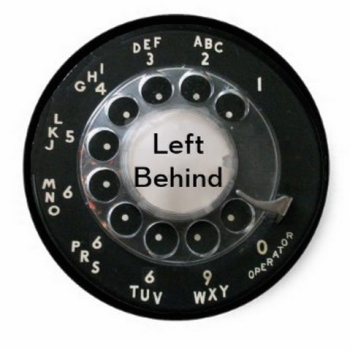If you ever want to know about the creation, nurture and health of online communities, ask Patrick and Teresa Nielsen Hayden.
They’ve been doing this and thinking about how it works since before the Web, and you can see the results in the community of commenters at their blog, Making Light, where I often lurk to enjoy the conversation there, feeling like a busboy at the Algonquin in the ’20s.
“Design matters,” Patrick says, and he did such a nifty job of articulating why and how, that I asked him if I could post some of it here:
First: Threading is appropriate for online discussions where the objective is to get a particular question answered efficiently and then leave. Without particular software tools which are not built into web browsers (I’m thinking of Usenet reader software, or programs like the old CompuServe Navigator), it’s extremely destructive of the kind of open-ended, wide-ranging discourse for which people come to your site.
Threading makes it vastly, vastly more difficult to see when new comments have been posted. It causes productive discussions to split into smaller and smaller subgroups, and encourages toxic back-and-forths between a few (or, sometime, only two) people that wouldn’t have happened if the conversation were happening in the presence of all participants. It undermines the participants’ sense that they’re all in the same conversation. With threading hath no man a painted paradise on his church wall. With threading the line grows thick. Wait, those last two are Ezra Pound on “usura”, but you get the idea.
Second: Putting the comment entry box on top of the comments themselves, rather than below them, is a dreadful idea. It says “go ahead and leave a single drive-by remark.” It says that reading other people’s contributions before posting — the basic politeness of listening to an ongoing conversation for a little while before weighing in — isn’t important. It says that the only real relationship is between the reader and Fred Clark, and it downgrades the value of any possible relationship between the reader and other readers.
Third: The presence of “like” buttons is bad enough — we don’t have enough opportunities in life to rank one another and engage in pointless competition? — but what you may not be aware of is that when a user comes to your new site for the first time, the comments are ordered not chronologically but in order of their supposed popularity, as determined by which comments got people to clink the “like” buttons. There is a popdown menu that allows the user to tell the site to order the comments chronologically, but if there’s one thing that we know from years of studying this stuff, it’s that the overwhelming majority of users never change default settings.
To sum up, the design of your new site says three things to people who are considering commenting. The first is that comments are primarily a way for readers to leave a note for Fred Clark. The second is that the larger conversation (or the possibility of a larger conversation) doesn’t matter. The third is that popularity is the most important measure of value. I can’t imagine three messages less in keeping with what your site is about.
Those aren’t three messages I want to be sending. I am sorry for having done so and for not realizing that I was doing so.












